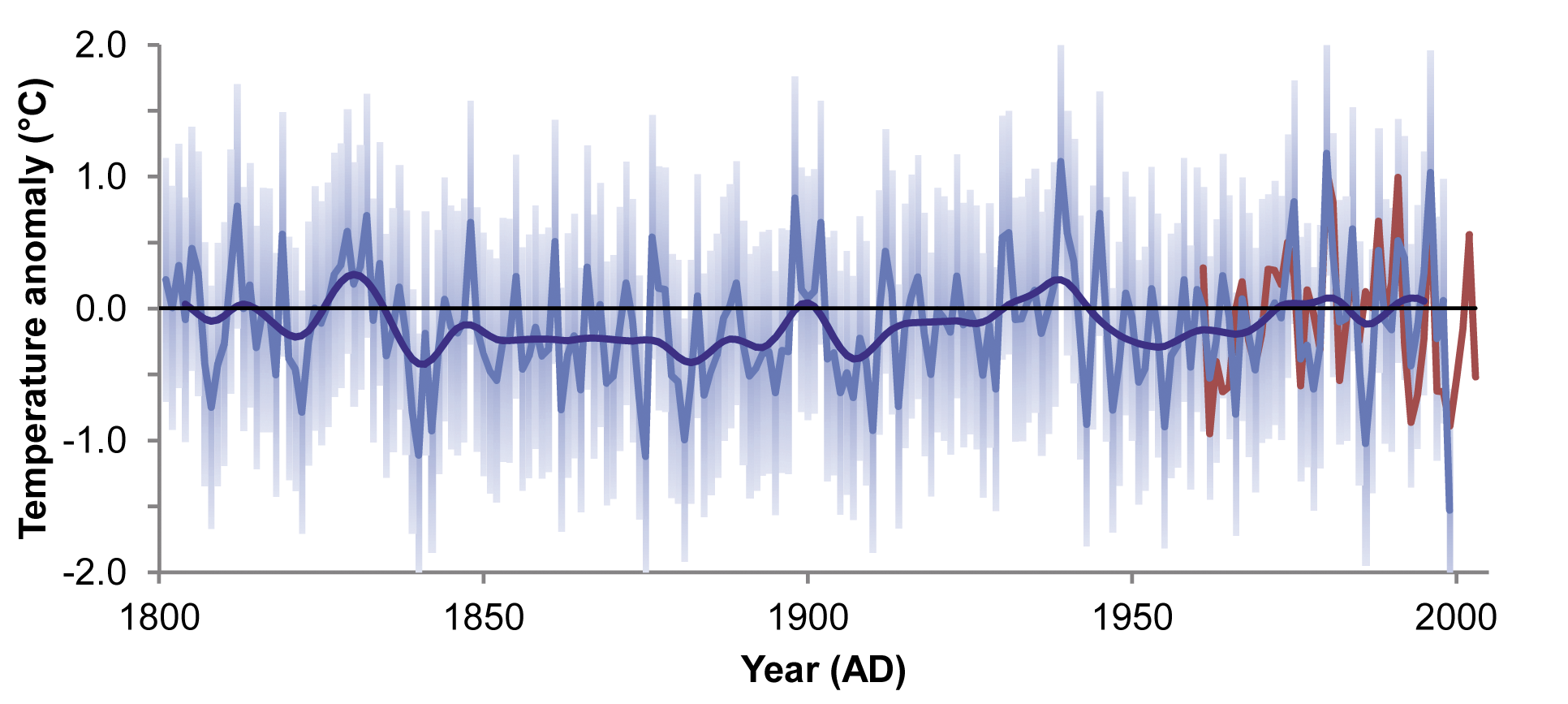- Home
- Publications
- PAGES Magazine
- 1st Workshop of The PAGES Antarctica2k Working Group
1st Workshop of the PAGES Antarctica2k Working Group
Tas van Ommen and the Antarctica2k Steering Committee
PAGES news
20(1)
47
2012
Tas van Ommen1 and the Antarctica2k Steering Committee
1Australian Antarctic Division (AAD), Kingston, Australia; tas.van.ommen aad.gov.au
aad.gov.au
Bern, Switzerland, 19-20 July 2011
The first Workshop of the PAGES Antarctica2k meeting at the University of Bern was a successful start to the tasks of building a community for reconstructing Antarctic climate and the development of a plan to undertake such reconstructions within the PAGES 2k Network timeframe. The meeting resolved to make reconstructing Antarctic temperature a priority. At present, the best available reconstruction for the continent is that of Schneider et al. (2006) in Figure 1. Now, some five years later, additional records, new methodologies, and a longer meteorological calibration period are available. This last point is significant, as the very short extent of the high quality instrumental record in Antarctica (3-4 decades) makes even a 5-10 year extension in overlap with the proxy records valuable. The intention is to push the 200-year record back towards the 2000-year goal of the PAGES 2k Network.
This undertaking has some unique challenges attached to it. Beyond the short nature of the calibration period, the meteorological data are also spatially sparse and there is concern that the period of observations is coincident with the period of anthropogenic disturbance. On the proxy side, the high-resolution data network will presently be limited to ice core records. While ice cores are generally well suited to reconstruct climate, the Antarctica2k database will nevertheless be much less heterogeneous in proxy types than other geographic regions in the PAGES 2k Network. However, lower resolution proxy records will be incorporated for validation of decadal and centennial scale variability. In addition, the group has acknowledged the potential for high-resolution marine based records (Expedition 318 Scientists, 2010) that will be used at later stages of the project.
The work plan developed for the temperature reconstruction is organized around three groups: a data group (led by Mark Curran, AAD Australia) is assembling the input records and dealing with dating and quality control, a synthesis group (led by Tas van Ommen) will derive the actual high resolution reconstruction and a “non-ice” proxy group (led by Dominic Hodgson, BAS Cambridge) is working on the complementary lower resolution records.
At the meeting, good initial progress was made by the data group. Initial comparison of volcanic records from Law Dome (Eastern Antarctica), the West Antarctic Ice Sheet and Greenland confirmed the potential of a common volcanic-tie chronology to underpin the 2000-year record. Law Dome and Greenland volcanic marker ages agree within 4 years at 168 AD. The data group will assemble the ice core records (water isotope and associated volcanic data) with chronological and quality control to ensure consistent dating. This phase is expected to be completed by November 2011. The synthesis will then take place and an initial reconstruction product is expected for early 2012. Discussion at the workshop around the analysis issues acknowledged that the unique challenges noted above might lead to problems with some of the statistical reconstruction methods. Therefore the group will investigate a range of reconstruction approaches.
Later in the PAGES 2k Network timeframe, the Antarctica2k group will investigate reconstructions for other variables including precipitation.
The steering committee for the Working Group comprises Tas van Ommen (leader), Hubertus Fischer, Dominic Hodgson, Mark Curran, Valérie Masson-Delmotte, Bo Vinther and Liz Thomas. We welcome participation from the Antarctic paleoclimate community.
Figure 1: Antarctic temperature reconstruction from AD 1800-2000 based on five ice core sites (adapted from Schneider et al. 2006). Blue curves are the annual reconstruction and a decadal smooth (Gaussian with σ=3 years). Error shading shows 95% confidence interval. Red curve is calibration temperature target. The zero reference is the 1961-1990 climatological mean.
references
Expedition 318 Scientists (2010) IODP Preliminary Report 318, doi: 10.2204/iodp.pr.318.2010
Schneider et al. (2006) Geophysical Research Letters 33, doi: 10.1029/2006GL027057


